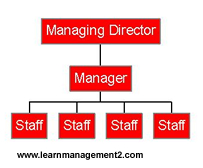Some of the 21st century trends are globalization, flexibility, flatness, networking and diversity.
GLOBALIZATION:
Globalization is the most important sector which will continue to accelerate during the 21st century and serve as the most important influence on the industry for the next few decades. Therefore communication is very important for globalization. Example: Wipro Technologies do business with many foreign countries, so they must know how to communicate with them.
DIVERSITY:
Cultural diversity encompasses the cultural differences that exist between people, such as language, dress and traditions, and the way societies organize themselves, their conception of morality and religion, and the way they interact with the environment. In the 21st century the workforce is getting more heterogeneous sexually, racially, culturally and individually. This has been a source of both innovation and also has caused conflicts because of the communication problems.
FLEXIBILITY:
In the 21st century companies are very flexible which means companies have a very few rules and regulations in their work place and they also have greater autonomy and encouragement for initiative. They provide lifetime employability and not lifetime employment. Companies will also have customizable employment relationships like telecommuting, job sharing, mommy tracks and pay for skills.

FLATNESS:
The latest trend in the organizational structure is the flat structure. This will have fewer levels of management and the workers will have the power of decision making. This is mainly due to increase the speed of the communication which will help the employees to interact faster and take faster decisions. This would also help the organizations to cut down their costs because this structure will have fewer managers.
NETWORKED:
Networking is a very key aspect in the 21st century. It will help the organization to directly communicate across unit and firm boundaries. It will help in cross-unit team structure, outsourcing and downsizing of the work. This will also help in getting in touch with the customers anytime and very quickly. This is mainly due to the fast changing customer needs and competitors offerings.
Reference:
http://en.wikipedia.org/wiki/Cultural_diversity
No comments:
Post a Comment